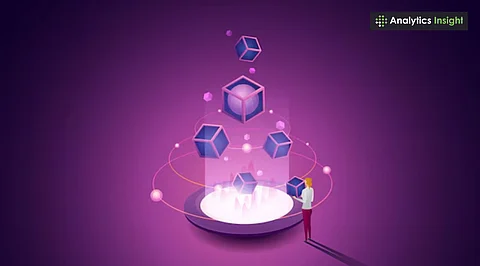

Uniswap v4 and Aave v4 improve trading and lending with lower fees and cross-chain support
Lens Protocol and Audius offer creators control and earnings without platform interference
dApps are expanding from crypto to social, gaming, and music, appealing to more daily users
Decentralized apps are changing how the internet functions. These applications operate on blockchain networks and remain free from control by any single company. Initially, most were centered on cryptocurrency trading. Top dApps 2025 are transforming industries with innovative use cases in finance, gaming, and social media.
The growth of top dApps 2025 reflects rising interest in user-owned platforms and decentralized ecosystems. Over time, their use has expanded into various areas, including music, gaming, lending, and social media. The following ten dApps are among those making a significant impact this year.
Uniswap is a platform for swapping cryptocurrencies. The latest version has lower fees and smoother trading. It also allows exchanges between different blockchains, which helps users avoid big platforms like Binance.
Lido is used for staking cryptocurrencies, such as Ethereum. Typically, staking locks the tokens, but Lido provides an additional token in return. That token can still be used. This makes staking more flexible and valuable.
Aave is used for lending and borrowing crypto. Its updated version supports more blockchains and offers higher interest rates. It remains one of the top apps for generating additional income from lending.
Pendle separates crypto earnings into a fixed and variable component. This provides users with the option of stable earnings or increased risk and reward. This approach is attracting users who seek more control over how they earn.
Curve is designed to exchange stablecoins such as USDT and USDC. These tokens maintain a relatively constant value. Curve remains low on trading fees and rewards those who use it in the long term. Many use it to move money more safely.
EtherFi focuses on restaking and allows users to earn additional rewards from already staked Ethereum with minimal extra involvement. The concept is relatively new but is gaining popularity due to the potential for higher returns.
New Blockchain Apps provide secure, transparent solutions that eliminate middlemen in online transactions. The Graph is a tool used by many apps to collect and organize blockchain data. It is not directly visible to most users, but developers rely on it to build faster and better apps.
Lens is a social media app that stores everything on the blockchain. Users control their profiles, posts, and followers. Many creators are opting for it over platforms like Instagram because it offers them more freedom.
Decentralized Applications ensure user control, privacy, and resistance to censorship across digital networks. Audius is a music platform where artists can upload songs and earn directly from listeners. There is no middle platform taking a share. Fans also earn tokens for supporting artists and joining activities. It is a strong option for new and independent musicians.
Axie Infinity was one of the first games to utilize cryptocurrency. The updated version features improved visuals and additional capabilities. It now runs on its blockchain, which improves speed and reduces costs.
Finance-focused decentralized apps continue to lead in usage, while newer categories are attracting growing interest. Social media platforms, AI-powered tools, and creative applications are becoming more common. Many current dApps offer features such as live chat, music streaming, and digital reward systems.
Popular Web3 Tools now include wallets, DAO management platforms, and token analytics dashboards. Emerging Crypto Platforms support dApp development with scalability, interoperability, and security in mind.
The most widely adopted apps are those that are user-friendly and meet practical needs. Usage is expanding beyond crypto communities, with an increasing number of individuals incorporating these apps into their everyday activities.
Join our WhatsApp Channel to get the latest news, exclusives and videos on WhatsApp
_____________
Disclaimer: Analytics Insight does not provide financial advice or guidance on cryptocurrencies and stocks. Also note that the cryptocurrencies mentioned/listed on the website could potentially be scams, i.e. designed to induce you to invest financial resources that may be lost forever and not be recoverable once investments are made. This article is provided for informational purposes and does not constitute investment advice. You are responsible for conducting your own research (DYOR) before making any investments. Read more about the financial risks involved here.
